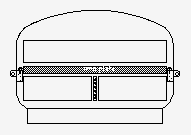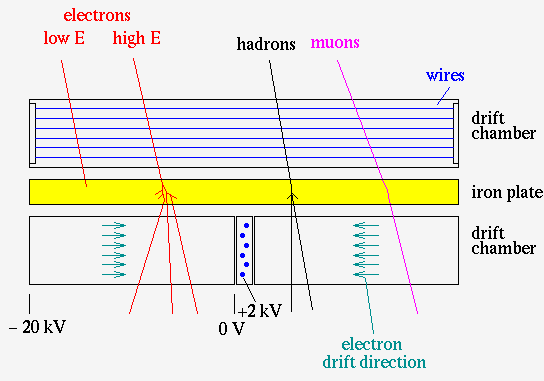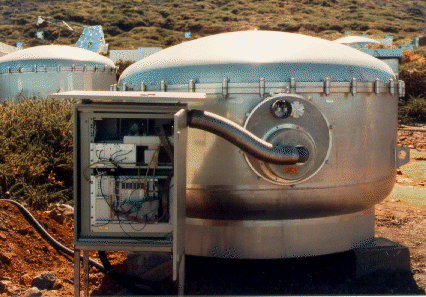 Introduction to Cosmic Ray Tracking
Introduction to Cosmic Ray Tracking Introduction to Cosmic Ray Tracking
Introduction to Cosmic Ray TrackingThe traditional method for measuring the particle cascades (the so-called Extensive Air Showers, EAS) from ultrahigh-energy cosmic rays, the scintillator array timing method, requires that many scintillators spread over a large area are hit by secondary particles of the air shower. The arrival times of the secondary particles are used to measure the arrival direction of the primary particle.
The tracking method, on the other hand, makes use of the good correlation between the arrival directions of primary and secondaries. Due to the more efficient use of the information which is available from the secondary particles, the tracking method needs less observed secondary particles for the same angular resolution as the scintillator method. Therefore, a lower energy threshold can be achieved with the tracking method. The disadvantage of the tracking method is that more sophisticated equipment is required than for the timing method.
The CRT detector working principle looks like that:

Particle tracks are reconstructed from the recorded pulses in a drift chamber. Low energy electrons are absorbed in the iron plate. High energy electrons (above a few hundred MeV energy) may produce an electromagnetic shower in the iron plate with additional particles in the lower chamber. Such 'punch-through' electrons are usually identified. Muons usually pass the iron plate with little scattering and can be identified as a matching pair of a track in the upper chamber and one in the lower chamber. Only hadrons (mainly high-energy pions) have a good chance to be misidentified as a muon. Because these hadrons, like muons, originate from hadronic showers, they don't spoil the discrimination between the different types of extensive atmospheric showers caused by gamma-rays on one hand and cosmic rays (atomic nuclei) on the other hand.
Upper and lower chamber are rotated by 90 degrees. Therefore, the drift direction in one drift chamber is parallel to the wire direction in the other. This allows us to calibrate the drift velocity from the tracks of muons penetrating both chambers.
The detector itself is in a gas-tight container filled with argon-methan gas. Some of the existing detectors have stainless-steel containers while others have spherical aluminium containers. Ten of the detectors with steel containers are currently in operation at the site of the HEGRA experiment on La Palma. One of them is shown in the following picture:

Each detector has a separate electronics box with a local computer system for readout of the drift chambers via a 40 MHz FADC system and for reconstruction of the particle tracks before the processed data is transferred to a central computer system.
For more information see our online papers or send e-mail to Konrad Bernlöhr